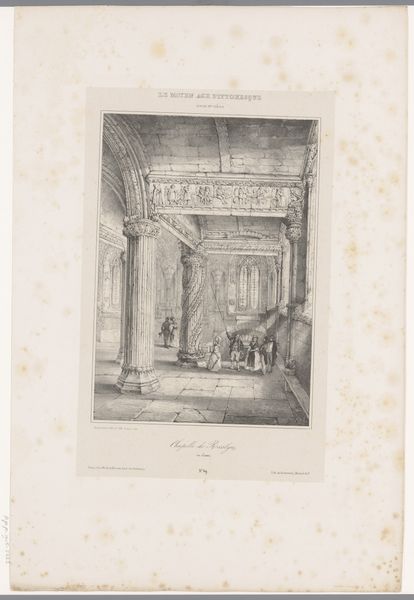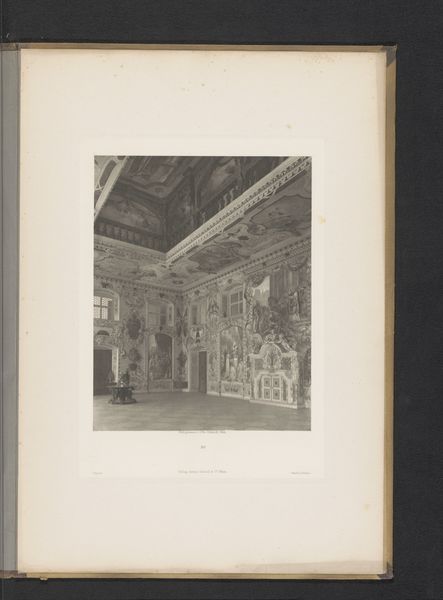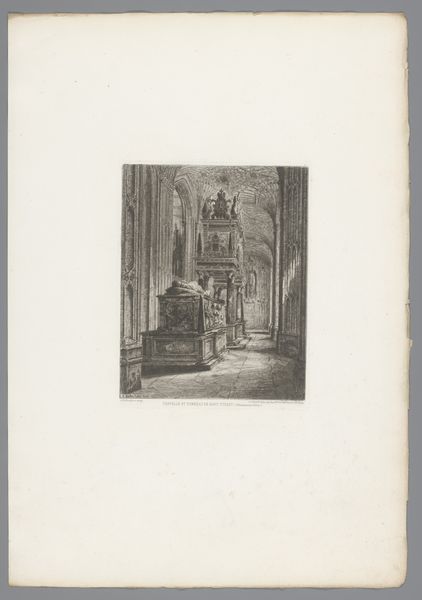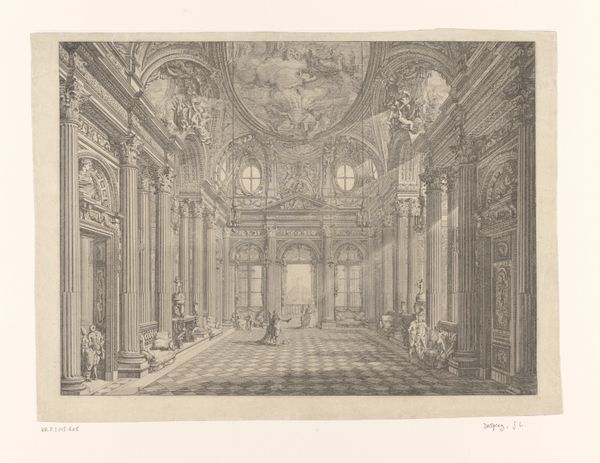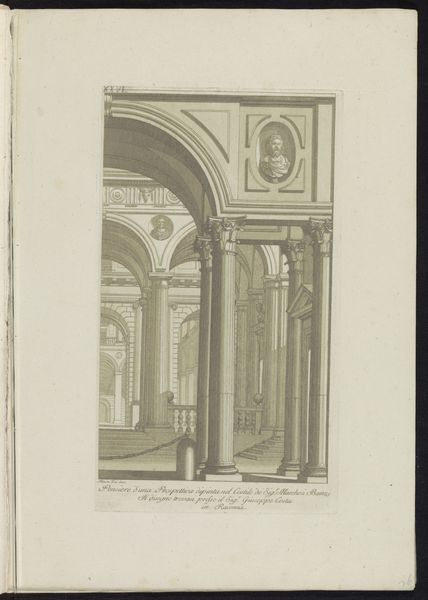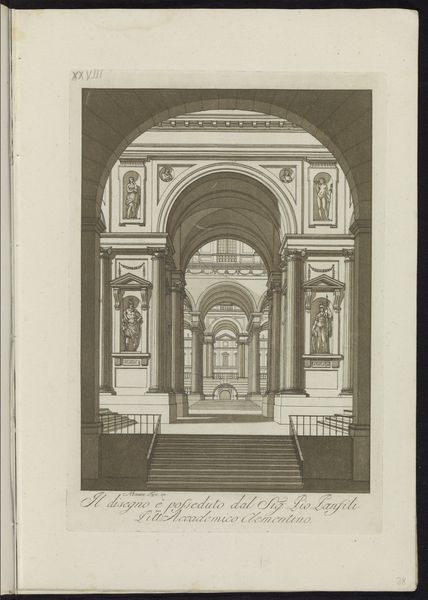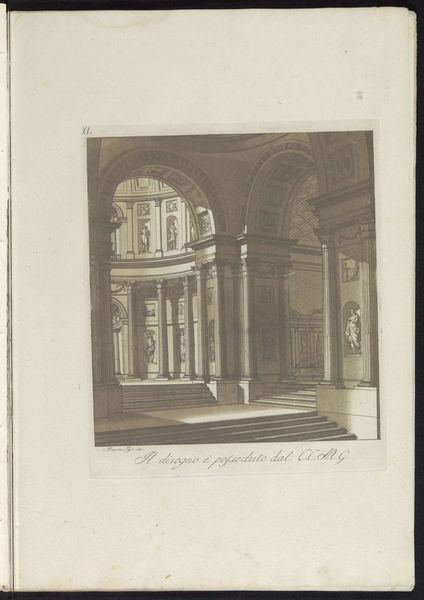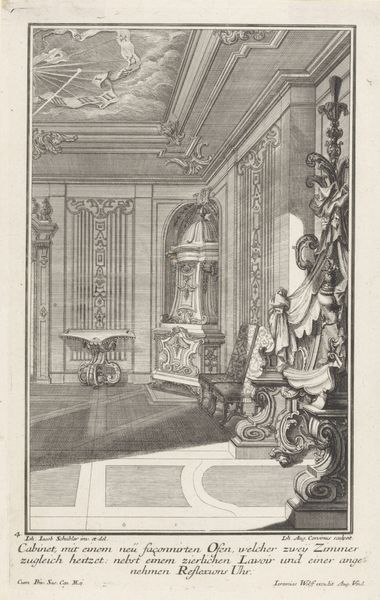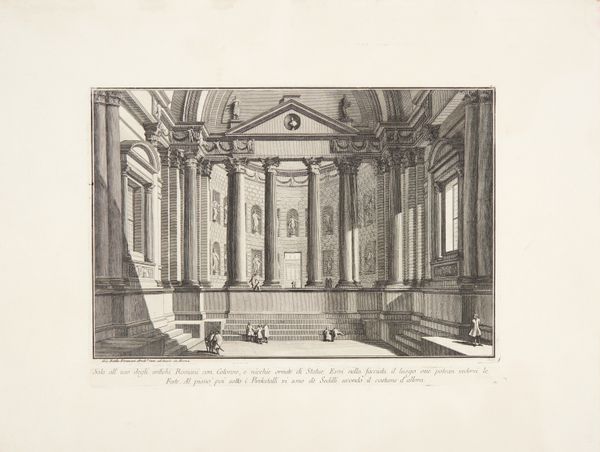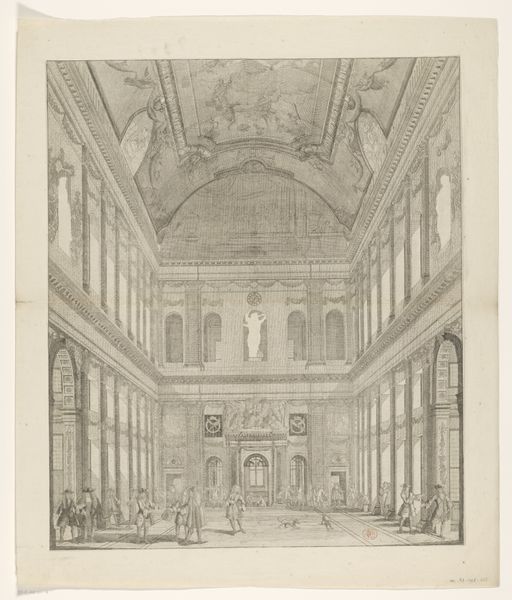
Gezicht op de vestibule van de Sint-Pietersbasiliek, te Vaticaanstad c. 1850 - 1870
0:00
0:00
philippebenoist
Rijksmuseum
drawing, print, engraving
#
drawing
#
neoclacissism
#
16_19th-century
# print
#
19th century
#
cityscape
#
history-painting
#
engraving
#
realism
Dimensions: height 551 mm, width 359 mm
Copyright: Rijks Museum: Open Domain
Editor: Here we have Philippe Benoist's "View of the Vestibule of St. Peter's Basilica in Vatican City," an engraving dating from around 1850 to 1870. The immense scale of the architecture dominates the scene. It’s quite breathtaking. How do you interpret the historical significance of a piece like this? Curator: This engraving presents the Vestibule not merely as a religious space, but as a statement of power, both Papal and, by extension, European. Consider the period – mid-19th century. The Papal States were fighting to maintain their territory amid rising nationalism. Images like these helped project an image of grandeur and stability at a time of social and political upheaval. Editor: So it's almost like propaganda, using art to project an image of unshakable authority? Curator: Precisely. Think about who would have purchased this print. Likely, it would have been members of the European elite, reinforcing their connection to Rome, to the Catholic Church, and to a shared cultural history. This image participates in the ongoing construction of Rome as the center of the Western world. It’s fascinating how the printmaking medium democratizes and disseminates this ideology. Editor: It’s interesting to think of the choice of viewpoint as strategic, focusing on that overwhelming scale and symmetry to instill a certain reverence or perhaps even awe in the viewer. Are there other examples of architecture in art performing a similar function? Curator: Certainly! Consider the architecture in Neoclassical paintings… Can you think of an example of architecture conveying a social or political message in artwork from another period? Editor: Well, looking back to more recent work... actually I think I have to look into that some more! Curator: Indeed, examining such pieces gives insight into the political role art and architecture play in the grand narrative of history and the construction of our identities. Editor: I never considered the social implications of architectural depiction before! This really changes my perspective on this kind of art.
Comments
No comments
Be the first to comment and join the conversation on the ultimate creative platform.
